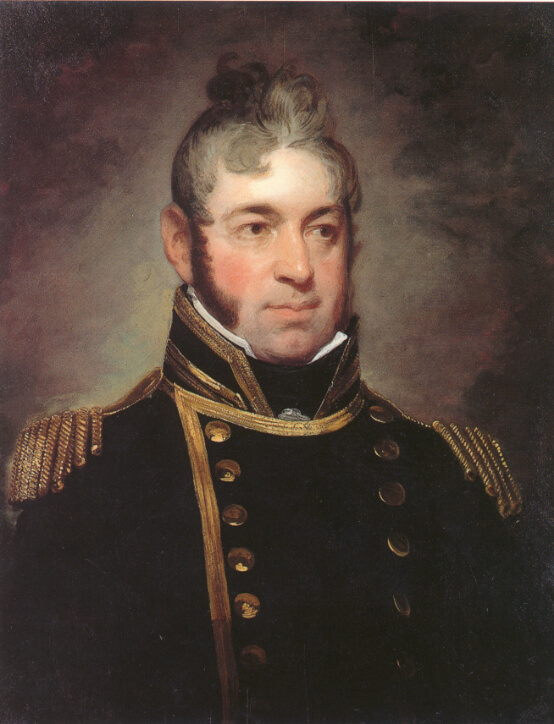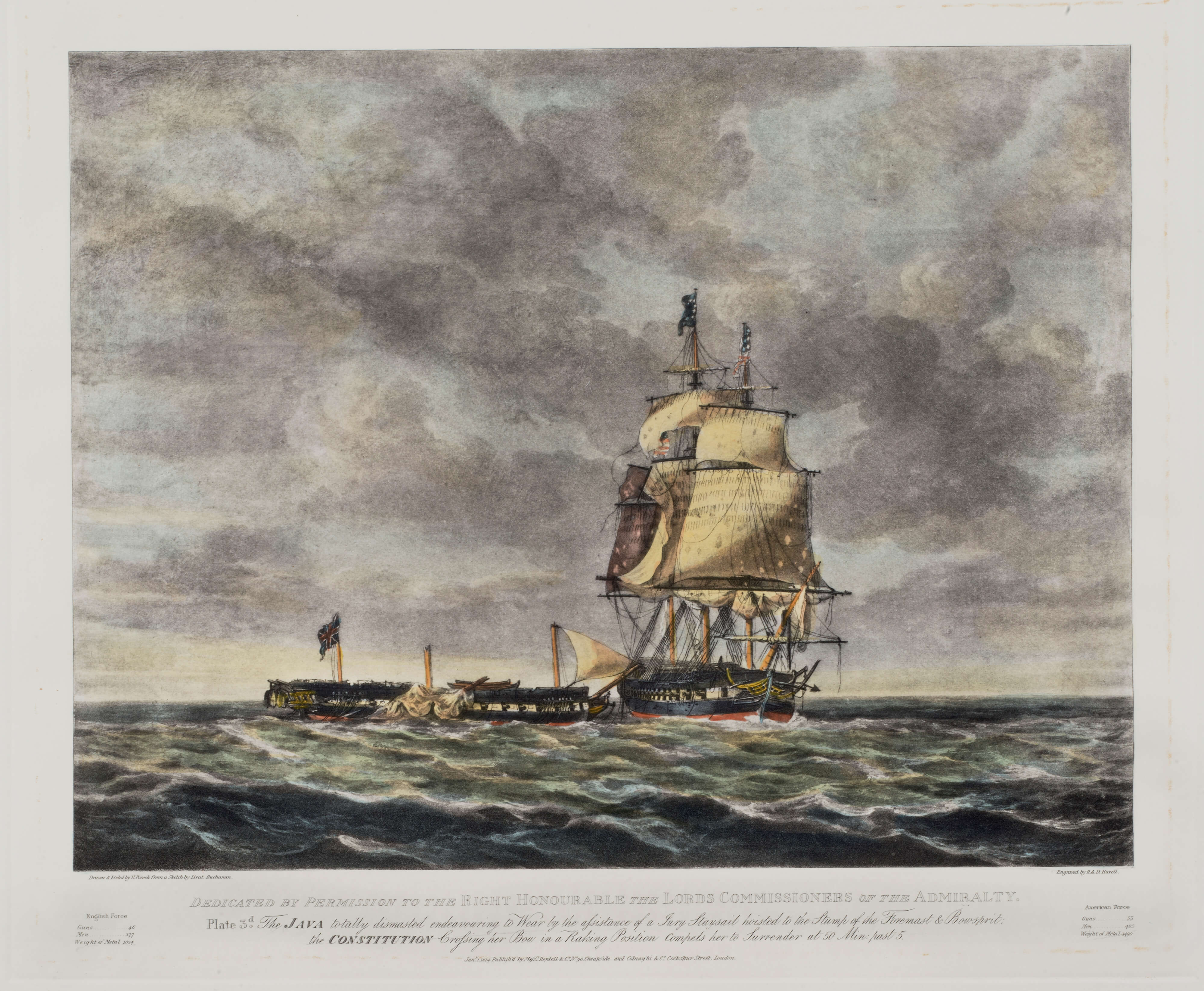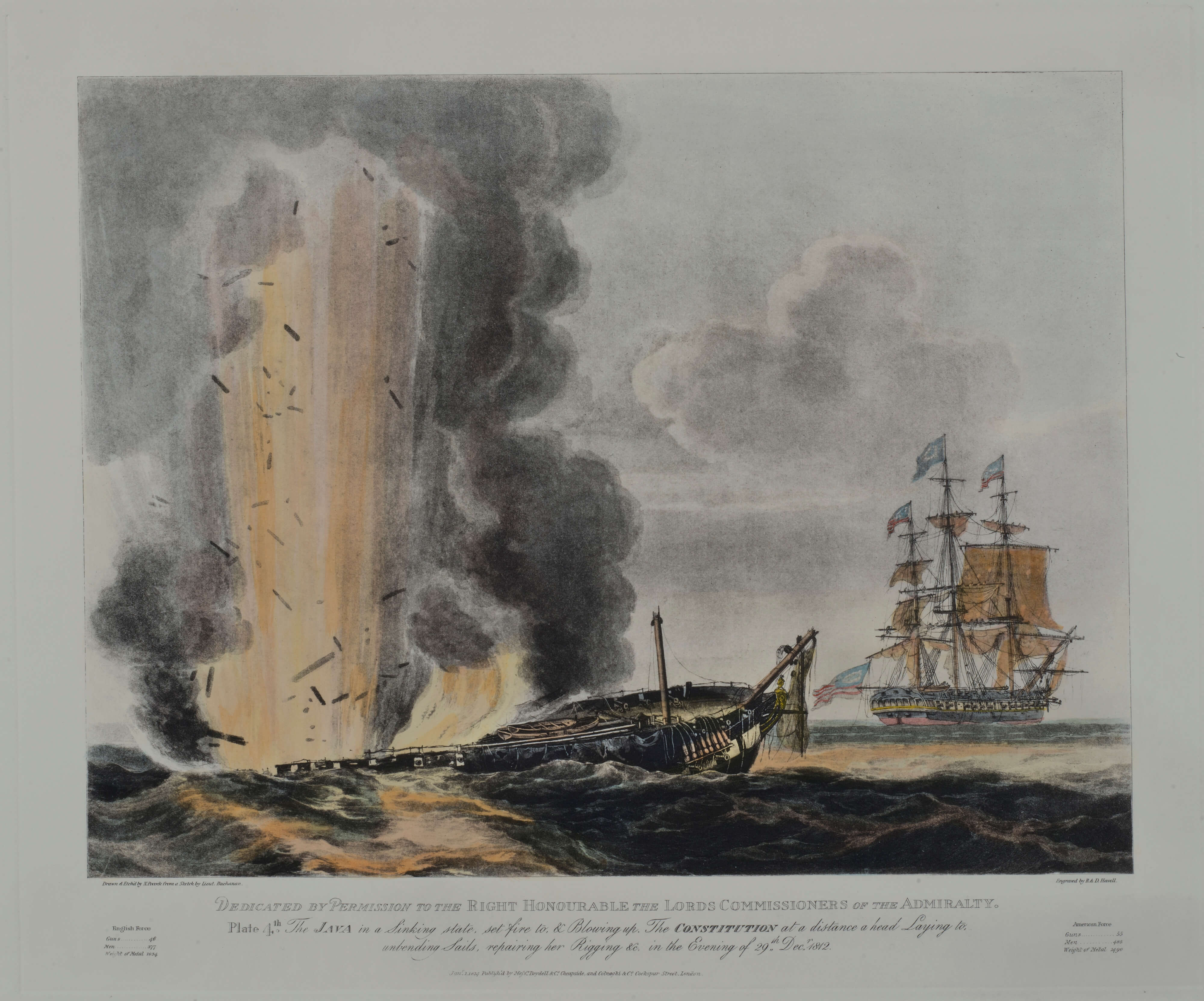With a fair wind, the U.S. frigate Constitution sailed from Boston on October 27, 1812. The war with Great Britain was four months old, and Constitution had already defeated one British ship, earning the nickname “Old Ironsides” in the process. As the coast of Massachusetts receded in the haze, Commodore William Bainbridge considered his orders from Secretary of the Navy Paul Hamilton: “annoy the enemy and…afford protection to our commerce.”


Java was the former Renommée, taken from the French the year before. While newly refitted and well-found in every respect, when it sailed from Spithead in November the crew left much to be desired. According to Henry Ducie Chads, Java’s first lieutenant (or rather his son, who wrote down his father’s stories a few decades after the fact), at first “they had [only] 27 men who had been in a Man of War before.” Later, they received a draft of men who were “50 of the worst characters from the [HMS] Coquette…Men who had almost been in open mutiny in their Ship and had cut the lanyards of the lower rigging when they were chasing an American Squadron.” Despite his raw and unhappy crew, Captain Lambert successfully sailed his ship south, and even captured a prize along the way. Throughout the cruise, the men had been trained at the guns, but “the evening before their action they had for the first time fired 6 blank broadsides.” Now, the Americans opened fire as the range decreased, but the gun crews had difficulty hitting their target. Soon, Java ranged alongside Constitution and the battle “commenced…within good Grape & Canister distance.” As the two ships maneuvered to rake each other, or deliver a broadside down the length of the opponent’s deck, Java suddenly turned under the American’s stern and fired. British shot smashed Constitution’s wheel and wounded or killed the four quartermasters manning it. The same broadside shattered a railing surrounding the after hatchway, embedding a shard of brass in Bainbridge’s thigh. Despite his wound, the captain rallied his crew, rigged tackles on the rudder to retain control of his ship, and regained his dominant position. The heavy American shot, coupled with the defensive properties of Constitution’s thick hull, began to turn the tide of battle. “[I]n many instances our Shot would not pierce the Constitution’s side,” wrote a passenger on Java, “while her Shot were not only going thro’ both our Sides, but drove large portions of our timbers in with them.”



The Americans fired several more broadsides and then stood off out of range to repair damaged rigging. On Java, the devastation was complete. Captain John Marshall, travelling as a passenger to India, recalled the ship’s condition: “Our three masts & bowsprit were gone, the greater part of our Guns covered, & consequently rendered useless from the fallen masts laying on them, some Guns dismounted & otherwise destroyed with 23 killed & 101 wounded, our Ship often on fire, & a considerable quantity of water in the hold from Shot holes, with the Hull dreadfully shattered.” An hour later Constitution swept back to its wallowing foe and took up a raking position off the bow. First Lt. Henry Ducie Chads surrendered the ship. Constitution had won its second victory of the war.





Although suffering from damaged rigging, Constitution made Boston on February 15, 1813. News of the victory had arrived six days before, and the city was ready to welcome its conquering heroes. For Bainbridge and his crew there were the same rounds of parties, dinners, and parades that had greeted the other successful American sailors. The public was jubilant. In four and a half months, the U.S. Navy had taken three frigates from the Royal Navy (HMS Guerriere, Macedonian, and Java). When the news reached England, the Admiralty took steps to insure that no more of their frigates would fall victim to the Americans. In July 1813 they issued orders forbidding their captains from engaging American frigates one on one.
The Author(s)
Matthew Brenckle
Research Historian, USS Constitution Museum
Matthew Brenckle was the Research Historian at the USS Constitution Museum from 2006 to 2016.